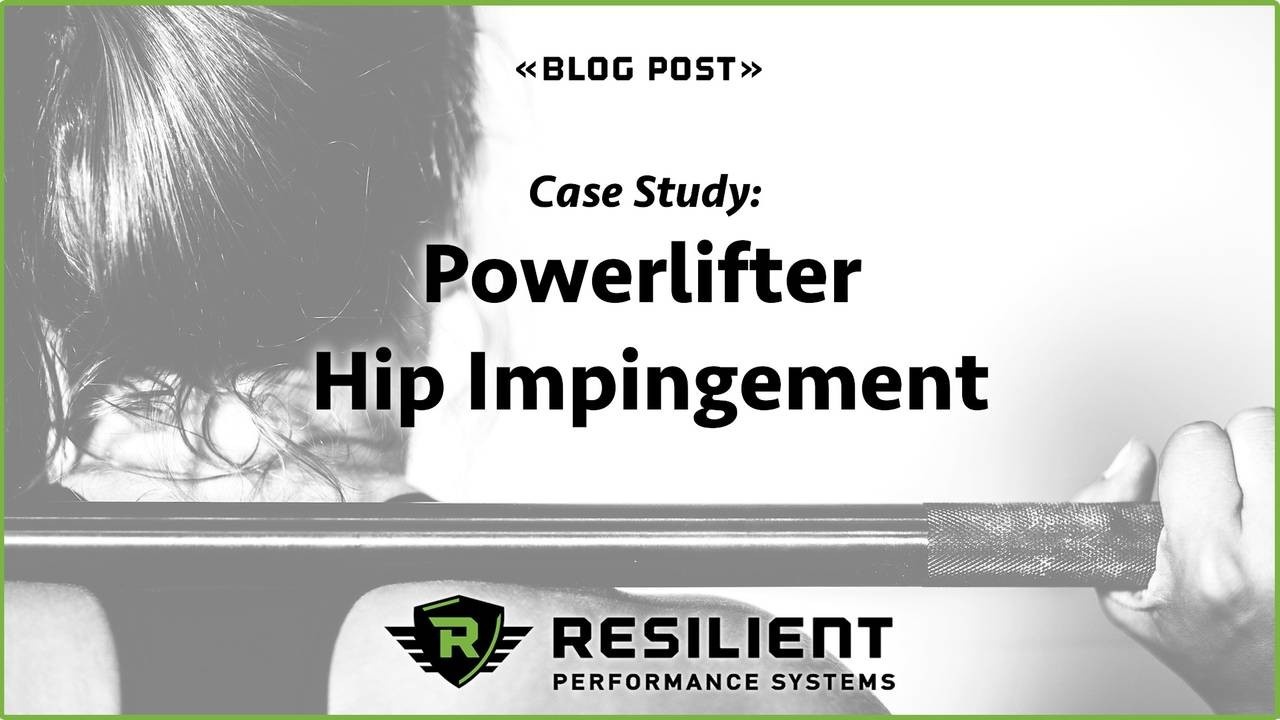
Case Study: Powerlifter Hip Impingement
There are too many abstract discussions in the performance space these days about how to train and rehabilitate athletes. These circular arguments usually yield nothing substantive or actionable because providers spend too much time defending their ideology and trying to articulate why they are in the right instead of just being transparent and “showing their portfolio”. As an example, investors should demand that financial advisers share their own portfolios instead of pontificating about macroeconomic theory. Words matter but what people do when they have skin in the game reveals more about them than their explanatory justifications for said actions.
The point of these case studies is not to suggest that what we did in any of these situations is particularly good. If we’re being honest, we don’t always have robust outcome measures to suggest that what we do really “works”. More often than not, we default to the eye test. We coach and own our decisions. The intent here, therefore, is to be completely transparent about what we did when an athlete’s time, money, and readiness was at stake in hopes that other providers share their experiences and contribute to a more genuine collective conversation.
Background
Female competitive powerlifter reporting left hip pain during squatting and deadlifting x 1 year. Unable to train either lift consistently for 8 months despite switching from sumo to conventional in the deadlift. Otherwise, no significant surgical background or medical history. Objective was to train and compete without symptoms.
Constraints
- Time: No upcoming competitions. Athlete wanted to focus on accumulating pain free volume and adhere to a consistent training plan.
- Logistics: No factor
- Financial: Athlete paid out of pocket since her insurance carrier doesn’t provide out of network benefits. She preferred to minimize the number of visitations by completing a program independently.
- Interpersonal Factors: Athlete was motivated, compliant, and receptive to coaching.
Evaluation Findings
- Pain with unloaded deep squat and loaded low bar squat. Notice the hip shift (R knee more exposed than L) on the low bar squat. Athlete was instructed to use a “warm-up” weight and chose 95lbs. She was given no cuing or instructions other than to do her “normal squat”.

- Limited toe touch (8” from toes, no perceived back pain or “tightness”)
- Orthopedic testing/gross movement: limited hip extension L, limited hip internal rotation bilaterally, limited hip adduction L, + FADIR L
- No previous imaging
Plan of Care
- Couch Stretch from Wall - 2 mins/side, don't arch lower back to get more upright, hold on to something for support as needed
- Hip Shift Hamstring Bridge Reps - 2x10, left side only
- Left Side-lying Knee Toward Knee - 2x30s, laying on left side only
- Inch Worm Peddling - 2x40/side, hands elevated as needed to keep knees locked and heels flat

- Above is the low bar squat at 95lbs following the plan of care. No additional cuing or instructions beyond “try your normal squat now”. Athlete was asymptomatic.
- Instructions for home plan: “Perform the above routine as a daily warm-up and utilize the Zercher as your primary loaded squat until you are asymptomatic for 2 weeks at which point you can transition back to the low bar. Perform hamstring centric bridges (dynamically and isometrically) as an accessory movement several times per week.”


Freebies and exclusive promos!
We won't share your info. Unsubscribe at any time.

